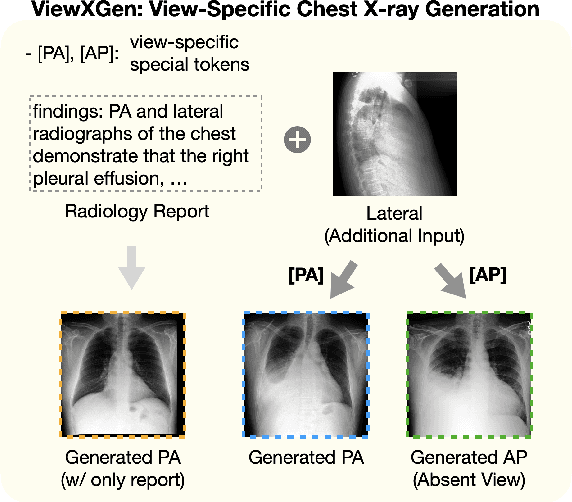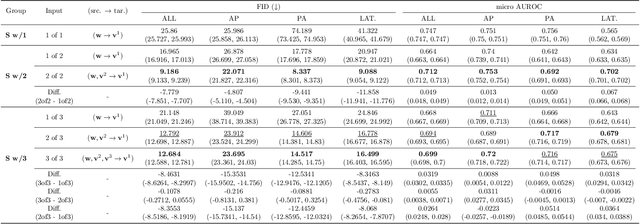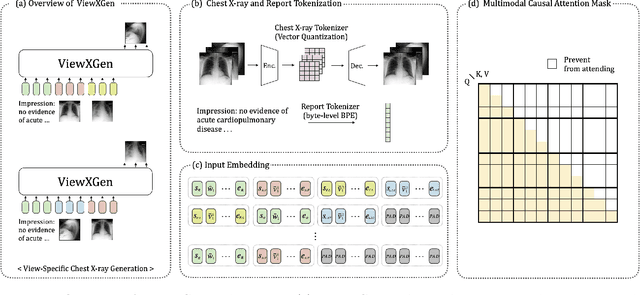Da Young Lee
Unified Chest X-ray and Radiology Report Generation Model with Multi-view Chest X-rays
Mar 01, 2023



Abstract:Generated synthetic data in medical research can substitute privacy and security-sensitive data with a large-scale curated dataset, reducing data collection and annotation costs. As part of this effort, we propose UniXGen, a unified chest X-ray and report generation model, with the following contributions. First, we design a unified model for bidirectional chest X-ray and report generation by adopting a vector quantization method to discretize chest X-rays into discrete visual tokens and formulating both tasks as sequence generation tasks. Second, we introduce several special tokens to generate chest X-rays with specific views that can be useful when the desired views are unavailable. Furthermore, UniXGen can flexibly take various inputs from single to multiple views to take advantage of the additional findings available in other X-ray views. We adopt an efficient transformer for computational and memory efficiency to handle the long-range input sequence of multi-view chest X-rays with high resolution and long paragraph reports. In extensive experiments, we show that our unified model has a synergistic effect on both generation tasks, as opposed to training only the task-specific models. We also find that view-specific special tokens can distinguish between different views and properly generate specific views even if they do not exist in the dataset, and utilizing multi-view chest X-rays can faithfully capture the abnormal findings in the additional X-rays. The source code is publicly available at: https://github.com/ttumyche/UniXGen.
Clinical Decision Transformer: Intended Treatment Recommendation through Goal Prompting
Feb 01, 2023



Abstract:With recent achievements in tasks requiring context awareness, foundation models have been adopted to treat large-scale data from electronic health record (EHR) systems. However, previous clinical recommender systems based on foundation models have a limited purpose of imitating clinicians' behavior and do not directly consider a problem of missing values. In this paper, we propose Clinical Decision Transformer (CDT), a recommender system that generates a sequence of medications to reach a desired range of clinical states given as goal prompts. For this, we conducted goal-conditioned sequencing, which generated a subsequence of treatment history with prepended future goal state, and trained the CDT to model sequential medications required to reach that goal state. For contextual embedding over intra-admission and inter-admissions, we adopted a GPT-based architecture with an admission-wise attention mask and column embedding. In an experiment, we extracted a diabetes dataset from an EHR system, which contained treatment histories of 4788 patients. We observed that the CDT achieved the intended treatment effect according to goal prompt ranges (e.g., NormalA1c, LowerA1c, and HigherA1c), contrary to the case with behavior cloning. To the best of our knowledge, this is the first study to explore clinical recommendations from the perspective of goal prompting. See https://clinical-decision-transformer.github.io for code and additional information.
 Add to Chrome
Add to Chrome Add to Firefox
Add to Firefox Add to Edge
Add to Edge